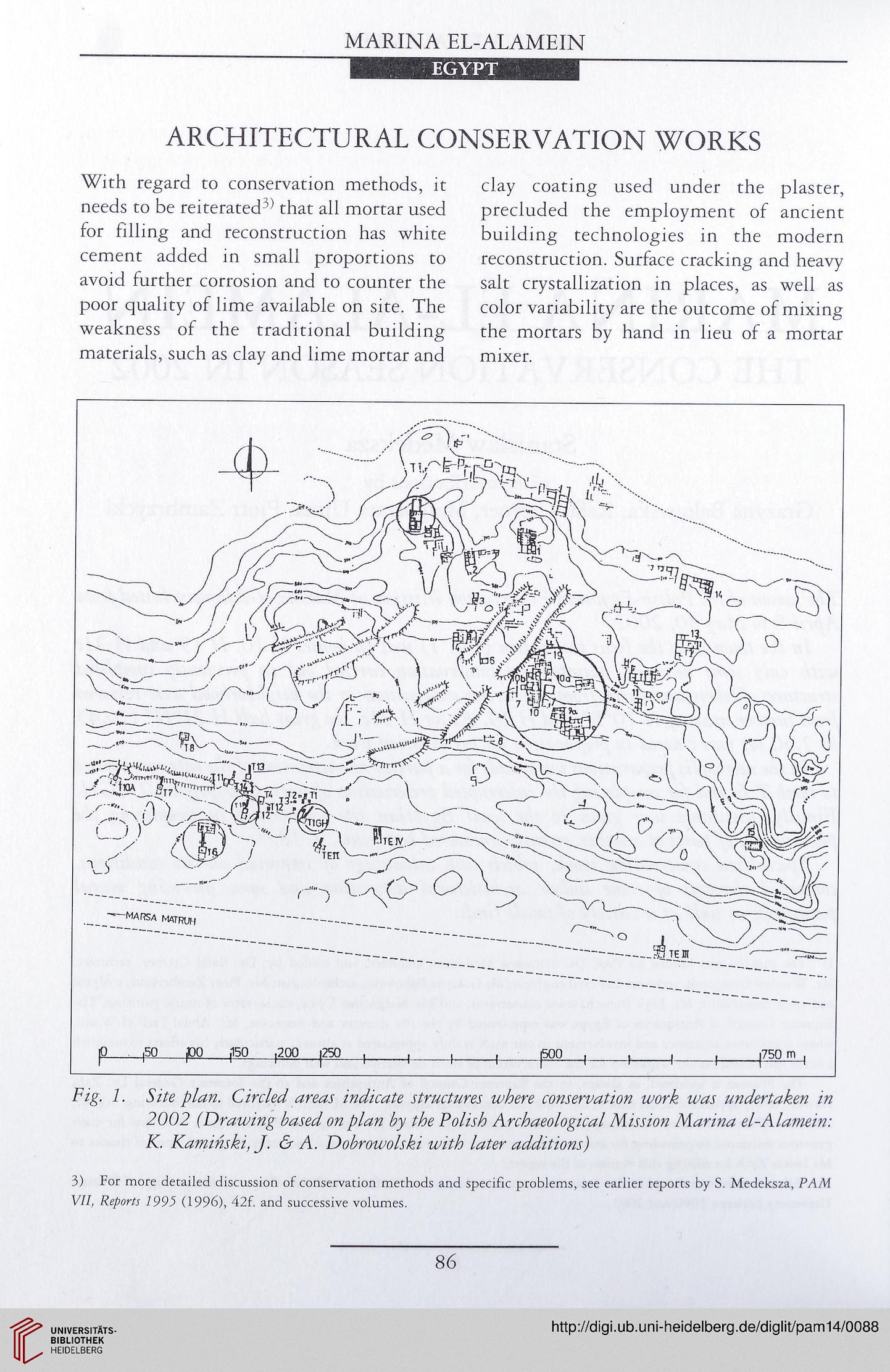MARINA EL-ALAMEIN
EGYPT
ARCHITECTURAL CONSERVATION WORKS
With regard to conservation methods, it
needs to be reiterated ^ that all mortar used
for filling and reconstruction has white
cement added in small proportions to
avoid further corrosion and to counter the
poor quality of lime available on site. The
weakness of the traditional building
materials, such as clay and lime mortar and
clay coating used under the plaster,
precluded the employment of ancient
building technologies in the modern
reconstruction. Surface cracking and heavy
salt crystallization in places, as well as
color variability are the outcome of mixing
the mortars by hand in lieu of a mortar
mixer.
Fig. 1. Site plan. Circled areas indicate structures where conservation work was undertaken in
2002 (Drawing based on plan by the Polish Archaeological Mission Marina el-Alamein:
K. Kaminski, J. & A. Dobrowolski with later additions)
3) For more detailed discussion of conservation methods and specific problems, see earlier reports by S. Medeksza, PAM
VII, Reports 1995 (1996), 42f. and successive volumes.
86
EGYPT
ARCHITECTURAL CONSERVATION WORKS
With regard to conservation methods, it
needs to be reiterated ^ that all mortar used
for filling and reconstruction has white
cement added in small proportions to
avoid further corrosion and to counter the
poor quality of lime available on site. The
weakness of the traditional building
materials, such as clay and lime mortar and
clay coating used under the plaster,
precluded the employment of ancient
building technologies in the modern
reconstruction. Surface cracking and heavy
salt crystallization in places, as well as
color variability are the outcome of mixing
the mortars by hand in lieu of a mortar
mixer.
Fig. 1. Site plan. Circled areas indicate structures where conservation work was undertaken in
2002 (Drawing based on plan by the Polish Archaeological Mission Marina el-Alamein:
K. Kaminski, J. & A. Dobrowolski with later additions)
3) For more detailed discussion of conservation methods and specific problems, see earlier reports by S. Medeksza, PAM
VII, Reports 1995 (1996), 42f. and successive volumes.
86




